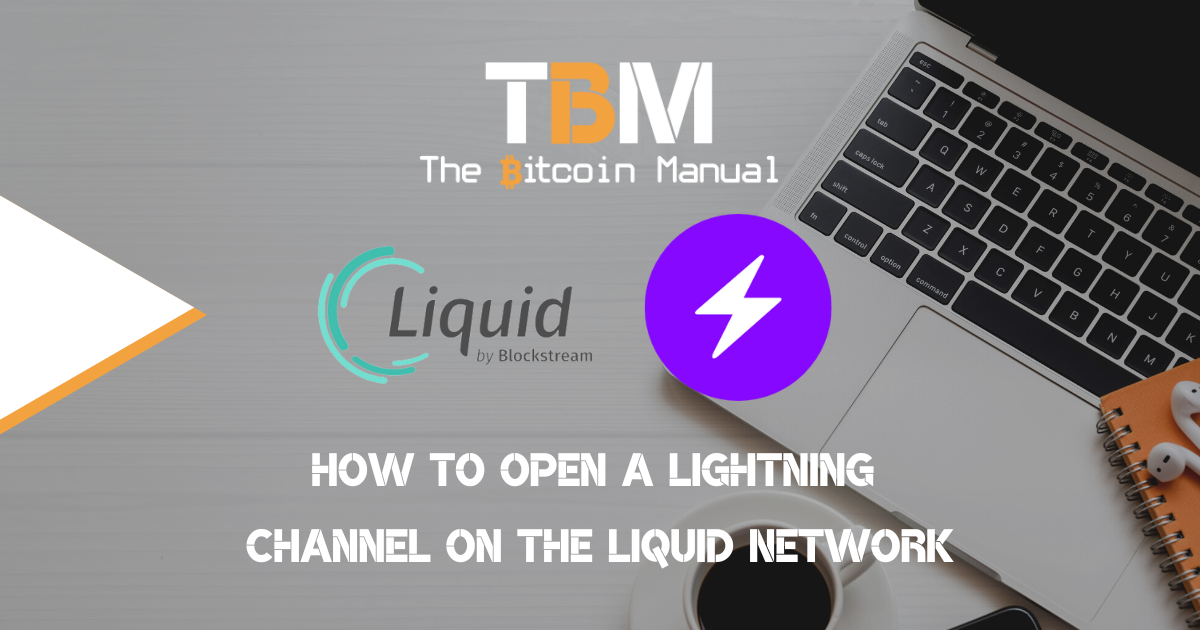The scaling of bitcoin beyond the base chain has seen the expansion of layer two protocols, with unique trade-offs designed to facilitate a certain type of transaction and user base. The Liquid Network is optimised for processing medium to large-sized transactions, often used by traders to arbitrage between exchanges. The Liquid Network is a fork of bitcoin. It operates via a sidechain: a unique blockchain that allows users to transact with tokens that are 1-to-1 exchangeable for bitcoin (BTC) called Liquid Bitcoin (L-BTC).
While The Lightning Network is optimised for processing micro to small-sized transactions without the need for a blockchain. The Lightning network allows users to send payments to each other by finding a pathway of Lightning channels through the network that connects the sender to the recipient. Lightning is ideal for micropayments, streaming payments and instant settlement at the point of sale.
However, the size of payment each Lightning channel can process is limited by the size of the initial funding transaction used to set it up.
This makes it less likely that, as transaction size increases, a complete pathway from buyer to seller will be found, making the Lightning Network less reliable for large transactions. The reliability of Lightning has improved with the addition of improved routing and multi-path payments. Still, it will always have limitations based on how much liquidity can be routed based on channel capacity.
If you’re holding bitcoin and you wish to avoid touching the base chain for a transaction due to fees or speed, you might want to opt for using either one of these layer two protocols.
Bitcoin layers need not compete when they can collaborate
Layer-2 protocols expand the range of options available to bitcoin users. They enable Bitcoin to scale and bring benefits that include lower transaction costs, improved speed, increased anonymity and access to new feature sets. The Liquid and Lightning networks both work independently from one another, but that need not always be the case.
While the two solutions use different transfer methods, they remain complementary and interoperable.
but you can also use lightning on top of liquid. eg c-lightning has L-BTC channel support. pic.twitter.com/aDYClOxo4G
— Adam Back (@adam3us) November 24, 2021
Since the Liquid Network is still a blockchain that uses UTXO sets, it makes Lightning fully compatible with the L-BTC pegged into the Liquid Network. Since the Lightning Network only requires you to lock a UTXO into an HTLC to establish a channel. A UTXO can be locked from the bitcoin base chain or the Liquid Network and become a spendable Lightning channel.
Requirements to open L-BTC-backed channels
To create a Lightning channel on the Liquid Network, you will need to run a bitcoin node, a Liquid Network node and a Lightning node. You will need to have both blockchains fully synchronised, and then only can you run a c-lightning client that can establish a Lightning Channel.
To create an L-BTC-backed Lightning channel, you will need the following:
- A synced Bitcoin node (latest Bitcoin Core)
- A synced Liquid node (latest release)
- c-lightning
- Ubuntu 18.04.2 LTS
- A Liquid Network wallet
- L-BTC in your wallet
Why open Lightning channels on Liquid?
Currently, there is very little need to create channels backed by L-BTC because bitcoin base chain fees are still pretty reasonable as competition for block space has not bid up fees to a point where it makes it slow and expensive to open and close channels. As the competition for block space does increase, some of that demand can be moved over to the Liquid Network to take advantage of the faster block times and readily available block space.
You can create cheaper channels on Liquid and have them confirmed within 1 minute without needing zero-conf transactions and turbo channels. Since Liquid is only limited by the amount of bitcoin pegged into the network by the users and honoured by the federation. In theory, more bitcoin can be pegged into Liquid to support the LIghtning network’s demand for liquidity.
Recipients on Lightning and Liquid also do not need to engage in any channel preparation; they can receive as much as a sender can send.
Speedrunning Bitcoin: Lightning on Liquid Demo https://t.co/p0alsfnltG
— magic internet moneyist (@notgrubles) January 30, 2021
Creating confidential lightning channels
The Liquid Network offers users Confidential Transactions by default which means block explorers cannot see the amount of bitcoin transferred to different addresses. Creating Lightning network channels from Liquid would receive that same treatment which adds to user privacy.
Moving issued assets onto Lightning
Issued Assets on the Liquid network, like stablecoins and tokens, can also be migrated from the Liquid Network to transact in a Lightning payment channel.
Submarine swaps and channel rebalancing
Liquid Network channels also support swapping on-chain BTC for L-BTC in a payment channel, making it easier and cheaper to do submarine swaps or move between the different networks through the cheapest route. Additionally, Lightning network users could find and request the cheapest avenues for liquidity, making channel rebalancing more affordable for smaller channels.
Sources:
If you would like to learn more about lightning channels on Liquid and dive down the rabbit hole, then we recommend checking out the following resources.
- Getting Started with Lightning on the Liquid Network | by grubles
- Getting started with the Liquid Network
Are you a bitcoin and layer two fan?
Have you been using Liquid or Lightning to make micro-payments? Stream sats or engage with apps? Which app is your favourite? Have you tried all the forms of Lightning payments? Which one do you prefer? Let us know in the comments down below.




